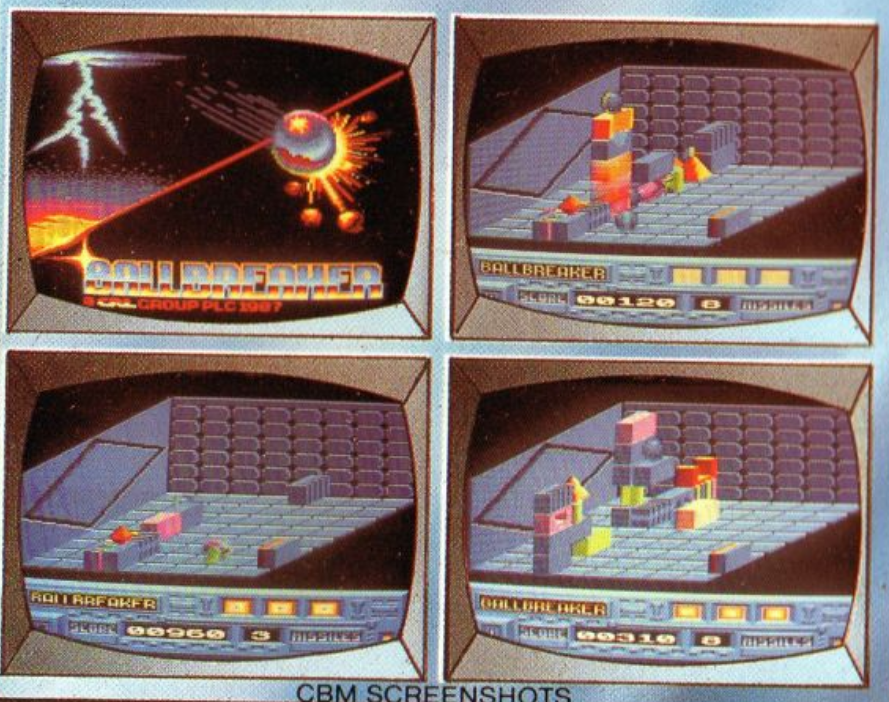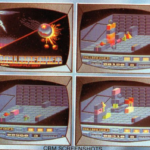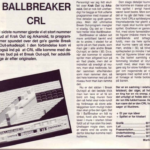Ball Breaker was an isometric breakout style of game that was released back in 1987 by CRL for the Amstrad and ZX Spectrum platforms.
What of a C64 edition though? Well, there hasn’t really been any evidence to suggest that a C64 version was on the cards – however, contributor Martin Smith found that the released cover seems to show “CBM” screenshots on the back.
What is particularly odd though is that the screenshots don’t look particularly C64-like – there are too many colours not present in the palette. It’s not the CPC version either, as the colours are not vibrant enough, and again seems to be consisting of colours not in the CPC palette.
So was it perhaps a 16-bit version being shown that was also unreleased? Might have been too early for CRL to do a 16-bit title. One theory is that CRL may have got hold of an Amiga very early on, and mock up screenshots were produced on the platform. However, there are subtle changes occurring in each of the screens – suggesting they were taken from something that was running.
Graeme Mason has done an in depth feature on Ball Breaker, and mentions the possibility of a C64 edition. It is suggested that the C64 would have been too slow to have handled a conversion, hence no conversion was made. There is no suggestion though if a conversion was started, but it is possible that something was started to test the water and viability.
Carlo Pirri (DrBong/Hall of Light team) got in touch after doing some research into another CRL game and found that Ballbreaker was later tidied up and converted to the ST/Amiga and released as Transputor in 1988. The artist for this conversion is credited as Jon Law, who likely would have been behind the C64 edition. So a lead to check!
Carlo agrees that screenshots are far too colourful to be C64 based, so it is felt that they were likely mock ups, possibly produced on the Atari ST with Degas, and then perhaps colour reduce for a C64 conversion later.
Interestingly, a C64 edition was apparently reviewed in Danish magazine RUN, back in June 1987. Was this really a C64 game reviewed, or did RUN magazine fake a review, anticipating a C64 version was coming?
Hopefully we will find out more soon to clarify, and also figure out exactly where the screenshots come from. If you know anything more to add to the above, please get in touch.
Contributions: Martin Smith, Stone Oakvalley (Magazine scan search), Carlo Pirri



